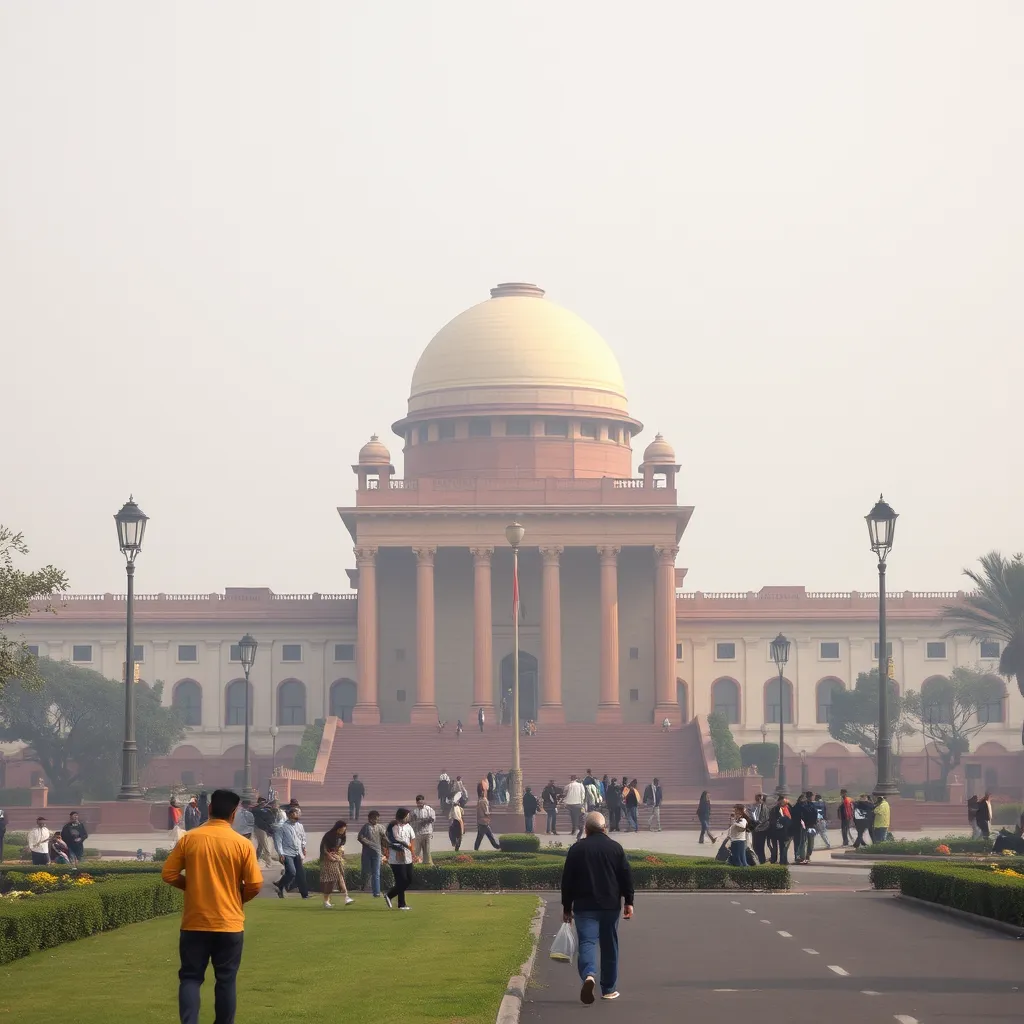
Table of Contents
Delhi air pollution supreme court
The Supreme Court of India has made a significant move towards relaxing the Graded Response Action Plan (GRAP) restrictions in Delhi, following a series of concerns over air pollution levels in the city. In a ruling on Thursday, December 5, the bench comprising Justice Abhay S Oka and Justice Augustine George Masih allowed the Commission for Air Quality Management (CAQM) to reduce GRAP-Stage IV restrictions to GRAP-Stage II, citing improvement in the Air Quality Index (AQI).
The Court’s decision comes after Additional Solicitor General Aishwarya Bhati submitted that the average AQI levels have been below the 300 mark since November 30. The bench noted that while there has been a downward trend in AQI levels, it is essential to ensure that measures are put in place to address air pollution concerns.
The Court’s ruling advises the CAQM to consider adding certain measures under GRAP-Stage III. If the AQI crosses 350, GRAP-III should be imposed, and if it crosses 400, GRAP-IV must be imposed. This move aims to strike a balance between easing restrictions and ensuring that air quality remains a priority.
The bench observed in its order: “Up to November 30, the AQI levels were consistently above 300 and it is only during the last four days that the levels have come down below 300.” The Court stressed that while it will leave the decision on applying GRAP stages to the Commission, it does not think it would be appropriate at this stage to allow for a reduction in stages.
By permitting the Commission to move to Stage II, the Supreme Court aims to provide relief to Delhi residents while ensuring that measures are in place to address air pollution concerns. However, the Court also made it clear that if the AQI crosses 350, GRAP-III measures will have to be implemented as a precautionary measure.
The Court’s decision is a significant development in the ongoing battle against air pollution in Delhi. The City has been struggling with poor air quality for years, and the Supreme Court has been instrumental in pushing for stricter regulations.
In recent months, the Supreme Court has taken several steps to address air pollution concerns in Delhi. The Court had previously allowed the relaxation of GRAP-4 restrictions only after seeing a consistent downward trend in AQI levels. The Court also took serious exception to the Delhi Police not ensuring the safety of advocates who were deputed as court commissioners to check the ban on entry of trucks to Delhi.
Today, the Supreme Court directed the Delhi government to pay court commissioners remuneration equivalent to Panel B counsels as fixed by the Union of India. The Court also ordered that authorities taking action under GRAP must not name the court commissioners in such notices.
The Supreme Court’s decision is a significant step towards addressing air pollution concerns in Delhi. While there is still much work to be done, this ruling demonstrates the Court’s commitment to ensuring that the city’s residents breathe easy.
Background (delhi air pollution supreme court)
Air pollution has been a pressing concern in Delhi for years. The City’s poor air quality has been linked to various health issues, including respiratory problems and cardiovascular disease. In recent months, the AQI levels have shown significant improvement, thanks to efforts by the government and other stakeholders.
However, despite this progress, the Supreme Court remains vigilant and continues to push for stricter regulations to ensure that Delhi meets its air pollution targets. The Court’s decision to allow the relaxation of GRAP-Stage IV restrictions is a testament to its commitment to protecting the environment and public health.
What Does the Decision Mean?(delhi air pollution supreme court )
The Supreme Court’s ruling on Thursday has significant implications for Delhi residents and authorities alike. Here are some key takeaways from the decision:
- The Commission for Air Quality Management (CAQM) can reduce GRAP-Stage IV restrictions to GRAP-Stage II, citing improvement in AQI levels.
- If the AQI crosses 350, GRAP-III measures will have to be implemented as a precautionary measure.
- The Court advises the CAQM to consider adding certain measures under GRAP-Stage III.
- Authorities taking action under GRAP must not name court commissioners in such notices.
Overall, the Supreme Court’s decision is a significant step towards addressing air pollution concerns in Delhi. By relaxing restrictions and imposing measures as needed, the Court aims to ensure that the city’s residents breathe easy while protecting public health.
Conclusion (delhi air pollution supreme court)
The Supreme Court’s ruling on Thursday demonstrates its commitment to protecting the environment and public health in Delhi. By allowing the relaxation of GRAP-Stage IV restrictions and advising the CAQM to consider adding certain measures under GRAP-Stage III, the Court aims to strike a balance between easing restrictions and ensuring that air quality remains a priority.
While there is still much work to be done, this decision marks an important step towards addressing air pollution concerns in Delhi. As the City continues to struggle with poor air quality, the Supreme Court’s commitment to protecting public health will remain crucial.
Source delhi air pollution supreme court:
Dailyread delhi air pollution supreme court:
